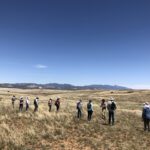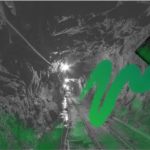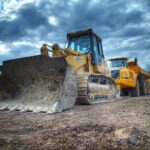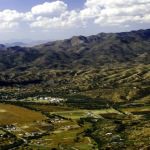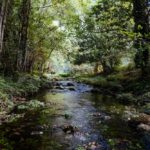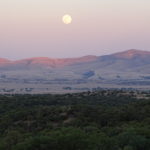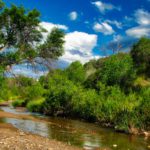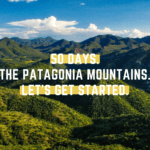In June 2020, Patagonia Area Resource Alliance reached out to 14 total candidates running for seats in the Patagonia Town Council, Santa Cruz County, and Arizona’s State LD2 this November. We asked them to share their thoughts and efforts in areas surrounding environmental issues, water concerns, and regulations.
Out of the 14 we reached out to, we received 10 responses. We hope these responses help inform you and your family as you look toward our 2020 election season. For full transparency, other than adding punctuation in a few places, we have neither shortened nor edited the responses to these questions.
Remember: There is a lot riding on this year’s elections. Register to vote, talk to those around you, and make a difference. We can’t protect the water and wildlife of Patagonia, Arizona, or the United States without you!
Patagonia’s Town Council:
We reached out to Francesa Claverie, Ron Reibslager*, and Michael Stabile, the candidates running for three Town Council seats. We did not hear from the candidates with asterisks next to their names.
Learn more about the Town Council candidates in this special article from the Patagonia Regional Times.
- What do you think are the biggest environmental challenges facing Patagonia?
Stabile: “I think one of the biggest environmental challenges facing Patagonia is the possibility of 200 to 500 trucks/day passing through the town spewing diesel fumes and noise 24/7. South 32 has not defined its exit strategy which because of the location will be a very difficult problem to solve. The Town has an ordinance that prohibits any company from operating more than 100 heavy trucks per week, we will use this ordinance to keep the traffic under control. If a company can circumvent the Town limits and get to State Hwy 82, then the Town would have no control over the number of trucks that pass through Town.”
Claverie: “The biggest environmental challenges are the rollback of the EPA Clean Water Rules and our local mining threats. The EPA rollbacks deregulate almost all the waterways and wetlands in Arizona, and the local mining threats endanger both the quality and quantity of our surface and ground water, as well as local ecosystems and wildlife.”
- Do you have ideas on how to make Patagonia more environmentally resilient?
Stabile: “The Town of Patagonia government is a Town Manager/Town Council government. The Town Manager runs the daily operations of the Town. The Town Council oversees the Manager, with the Mayor establishing the agenda for the Town. Each council person has one vote. I believe in protecting the environment of the Town which would include the health, safety, and quality of life for all the citizens. However, I am just one vote. I will do my best to recommend to the Council that protecting the environment is in the Town’s best interest.”
Claverie: “Environmental resiliency comes from educating ourselves and neighbors, preventing the encroachment of large extractive economies, and involving our communities in environmental restoration practices.”
- Ecotourism is an important part of Patagonia’s economy. How do you plan to sustainably support and grow Patagonia’s ecotourism?
Stabile: “The Town is open to all businesses that want to set up shop within Town limits. We do not promote anyone; we can only use what is called a use permit to possibly object to a business that might do harm to the town and affect other businesses within the Town limits.”
Claverie: “Supporting our ecotourism economy gives jobs and livelihoods for our community and the town can do this by not allowing competing franchises and large scale generic businesses to dominate our town, while also making sure our surrounding wildlife and greenspace is protected around Patagonia, both for the sake of the environment and our own livelihoods. As a community we need to come together and stop shaming each other. We need to support blue collar workers and realize that a great deal of the mining divide in this town along the “locals” v “new-comers” divisions has a lot more to do with classism and people not feeling heard or able to have a conversation about the issues that are most important to them. This means supporting a variety of businesses and jobs in our local economies, and respecting each other as community members. None of these divisions will be solved overnight but this kind of community work is critical to living together and supporting each other in a small town.”
- Patagonia is completely dependent on groundwater. How will you protect the quality and quantity of this essential resource?
Stabile: “The Town of Patagonia only has jurisdiction within its boundaries. We cannot control what happens in the mountains. We do have a watershed designation with the Forest Service, but this does not totally protect our water sources. The Town can only try its best to work with the companies that are in the watershed and get them to do the right thing.”
Claverie: “Groundwater can be over extracted as well as polluted. Both are important to monitor and educate our communities about. Water quantity is evaluated and protected through studies, transparent well locations and town water usage, decisions about what activities and types of water extraction to support, and support town policies for rainwater harvesting practices. Water quality is protected through encouraging clean up and education about legacy mines that continue to exist and pollute our watershed, as well as watching and evaluating potentially dangerous groundwater pollution practices of local mines like Hermosa project.”
Santa Cruz County:
We reached out to Robert Rojas, Manuel Ruiz, and Mike Melendez* (all running for SCC District 1); Rudy Molera* (running for SCC District 2); and Bruce Bracker, Donna Federici, and Justin Luna (all running for SCC District 3). We did not hear from the candidates with asterisks next to their names.
- What do you think are the most significant environmental challenges facing Santa Cruz County?
Rojas: “We have water issues, air pollution, sewer issues from the IOI, and contamination from manufacturing and industrial plants from our neighbors to the South and surrounding areas.”
Ruiz: “The wastewater treatment plant and air pollution from Nogales, Sonora MX.”
Bracker: “I think the most important environmental challenge is the preservation of the natural beauty we have while fighting to preserve the growth and job creation that our community and our youth need in order to keep our county as a thriving place and a desirable place to live. The county needs to identify Cultural, Historical or Naturally Pristine places for Conservation Easements – we need work to secure funding that can help us secure these places for future generations. Solid Waste and Recycling are long term issues that the county has been exploring various options to resolve. Water Quality and Air Quality are issues that require our continual attention. Mining, as South 32 continues to develop the property, other companies will attempt to develop their claims. Thus, we must be clear with the mining sector of our expectations though it is the Arizona Department of Environmental Quality that regulates the environmental compliance for the mining sector. We must also recognize that as a border county, our environment is also subject to what happens on the other side of the border, so we also monitor the events and policies on the Mexican side.”
Federici: “Water. Clean water is vital to sustain life. Water scarcity and water quality are significant concerns for our county as residential use, ecotourism, agritourism, farming and ranching can be damaged by insufficient quality water. In 2020, the Southwest’s long-standing drought caused Arizona’s first ever water cut-back from the Colorado River. The move is part of a plan to keep the reservoir at Lake Mead functional. Both Lake Mead and Lake Powell levels have grossly dropped due to over allocation and drought. Even though our county is mostly dependent on groundwater, our State and County is faced with the challenge of balancing significant water usage and potential pollution with economic recovery and growth. More specifically, we need to strike a critical balance between protecting our resources and the need to create sustainable jobs to insure our economic future.
Pollution. Another concern is the cross-border sewage water from Mexico into the Santa Cruz River. The river has its headwaters in the high grasslands of the San Rafael Valley and flows south for approximately 14 miles to the Mexico border near Lochiel, Arizona. After entering Mexico, the river continues south, but then turns 180 degrees to the north, and re-enters the U.S. 5 miles east of Nogales. The river continues a northerly route to its confluence with the Gila River. Pollution of the river in Mexico is a longstanding problem. The IOI (International Outfall Interceptor) is of grave concern as well. The nine-mile pipe brings Nogales Sonora and Nogales Arizona wastewater to Rio Rico’s water treatment plant. There the waste water is treated and purified and put back into the river. The problem is that the mega pipe has far exceeded its capacity and leaks on a regular basis. In 2017 the Army Corps of Engineers was called in to mitigate a massive break during monsoon season that dumped 27 million gallons of raw waste into the river. As recently as last October, the county waterway was contaminated with sewage and people were warned to avoid contact with the water. The pathogens in the water continue to be a significant risk to our people and wildlife. The Upper Santa Cruz river is designated an Important Bird Area being recognized for the diversity of birds it supports.
Wildfire Mitigation. Fire can be deadly, destroying homes, wildlife habitat grasslands, and timber, and polluting the air with emissions harmful to human health. Wildfires continue to be larger and more difficult to suppress because of a changing climate, persistent drought and hazardous fuel conditions. Homeowners who do not mitigate the wildfire risk on their properties impose a negative risk to others. I want to work with all stakeholders to insure we obtain and maintain a solid wildfire risk mitigation plan and to the extent possible, seek to reduce barriers with cost sharing programs.”
Luna: “There are quite a bit of significant environmental challenges our county faces. Specifically, District 3 since that is the district I seek to lead, fight for, and represent. The most significant environmental challenges, in my opinion, include old mining areas, non-recycling, air pollutants, and quality of water. Old mining areas that have posed threats to the water supply and the natural environment for Patagonia residents, the animals (both endangered and non-endangered animals) in those areas, and the earth. I personally feel that the old mines have to be reevaluated and cleaned out further. All the while trying to repair the earth to make it look as natural as possible. Non-existent recycling of plastics is a challenge too. The air is not the cleanest either. We all have to do our part as a community and unite together on this matter among others. However, it starts with leadership. Those who have the trust from the public to be elected have to set the example; an exceptional example at that!”
- Do you have ideas on how to make Santa Cruz County more environmentally resilient?
Rojas: “Yes I have some ideas however I would like to get together with the Santa Cruz County manager and staff and see what they have done in the previous years and addressing the environmental issues. Then, I would like to get together with environmental groups.”
Ruiz: “Working closely with Federal and State Government’s on funding environmental programs and initiatives.”
Bracker: “To make Santa Cruz County more environmentally resilient you begin to address the issues I mentioned in the environmental challenges question. The Conservation Easements, Solid Waste and Recycling are all items that the county plays a direct role in their implementation. The State of Arizona mandates that counties play a role in landfills. As such the county has been exploring various options to develop long term solutions for landfill service. Recycling has been a challenge in our community for quite a while as the world market has shifted back and forth on what is recyclable. The COVID-19 Pandemic has delayed a county pilot program for recyclable products for which we have identified markets. Other products such as glass, we are looking for local ways to reuse. Conservation easements are an excellent tool to preserve our most treasured assets.
Air and Water quality along with mining are all controlled by Arizona Department of Environmental Quality, ADEQ. Through local advocacy and ADEQ enforcement both the Ground water contamination and air particulate issues are being monitored. There is a Trichloroethylene, or TCE, plume in the ground water in the Meadow Hills area that ADEQ is in the process of monitoring and remediating. In addition, ADEQ has air monitoring equipment on the Nogales Post office in central Nogales and are sampling continuously to ensure compliance with PM-10 and PM-2.5 standards. Nogales and Rio Rico are designated by EPA as a nonattainment area for air particulates. We also work very closely with ADEQ on the international wastewater issue, and have collaborated with ADEQ Director Cabrera to find the long term solution for the IOI.
Just yesterday, both the IBWC and ADEQ announced the close to $39 million that will be invested in making major repairs to the IOI, repairs that will offer a fix-in-place for the IOI. It was a great opportunity for me to work with Director Cabrera and all the relevant players, including our Senators, our border Congressman and woman, and our state legislators in bringing this investment to Santa Cruz County. The International Outflow Interceptor, or IOI, is a sewer line that connects Nogales Sonora to the International Waste Water treatment Plant at Rio Rico. We are also in contact with ADEQ and the Environment and Water Resources Committee of the Arizona-Mexico Commission in order to keep apprised of binational efforts to protect the environment.”
Federici: “Citizens of Santa Cruz County deserve a united, dynamic vision, one that levies port trade with economic development, social and environmental challenges with the safety and sustainability of our residents and landscape and regulatory issues with fiscal responsibility. We need to create this plan for our future with coherency, transparency and unanimity. The County needs a goal driven Strategic Plan, that will capture our priorities and guide our spending. I advocate for environmental priorities to be included as a goal in the Plan and actions taken by the county to be evaluated by these goals prior to decision making. I want to engage and listen to the public. For significant environmental issues outside the purview of County government, I hope to ensure other government entities perform due diligence on rulings, permits, and inspections.”
Luna: “I do have a few ideas on how to make Santa Cruz County more environmentally resilient. There are plans my team and I have written up to add desert thriving trees, shrubs, and flowers throughout District 3. Not only will this add an aesthetic boost to our community, but also help provide shade, clean the air from pollutants, and help boost our ecosystem. I have a plan to recycle more water from the rain Mother Nature provides us and utilize the rain water effectively and efficiently for the county.”
- Ecotourism is an important part of Santa Cruz County’s economy. How do you plan to sustainably support and grow the county’s ecotourism?
Rojas: “I would handle item #3 similar to item #2. I would like to incorporate my thoughts and ideas with existing plans that the county should have in their yearly plan and goals for the County of Santa Cruz.”
Ruiz: “Support Santa Cruz Valley National Heritage.”
Bracker: “Ecotourism in Santa Cruz County is just beginning and has tremendous potential. Local groups like the Tubac Nature Center and the Patagonia Visitors Center, jointly with large national organizations like the Audubon Society and the Nature Conservancy have put Santa Cruz County on the map as a destination for bird watching. World class birding locations like Madera Canyon, Sonoita Creek, Santa Cruz River and Patagonia routinely provide a dazzling variety of birds from both North and South America. We need to continue to promote safe access to view these spectacular animals. The Anza Trail along the Santa Cruz River and the barriers on the bridge in Tubac are examples of how the county can collaborate with local stakeholders to enhance this experience. The Santa Cruz Valley Heritage Area will be another tool that the community in Santa Cruz County can leverage for promotion of ecotourism. One of the biggest positive impacts for birding has been the Wastewater treatment plant at Rio Rico and the resulting revitalization of the water that flows along the Santa Cruz River. Endangered species of fish are thriving and birds are far more abundant along the river than before. We must work to preserve this revitalized asset.”
Federici: “In 2019 Audubon Arizona released a report that found outdoor recreation along water in Santa Cruz County, the smallest county in Arizona, generates 142 million dollars in economic output and supports 1600 jobs around the State. Birder’s, hikers, families and locals all know what a gem this area is but a void still exists due to a lack of information on all the wonderful reasons that make us an attractive tourism destination. A county-wide tourism counsel along with a sophisticated website needs to be established and a concerted effort to partner with the Arizona Office on Tourism needs established. I also support repurposing the Sonoita Courthouse which could include a “brick and mortar” visitors center, a farmer’s market, county offices and a community center. We have many tourists to the East side of the county, especially visitors to wine country. I want to capture their interest with a stop at the visitor’s center for information on activities we offer or a stop at the farmers market to get a bite to eat, or to buy local produce or arts and crafts. As 85% of Arizona land is comprised of national forests, parks, recreational areas and Indian reservations, support for nature conservancy, ecotourism and agritourism in the form of grants from government entities and foundations are available and I seek to improve funding by prioritizing grant solicitation for this endeavor and others.”
Luna: “There is a program I have drawn up which will consist of a variety of personnel working together in order to sustainably support and grow the county’s ecotourism; especially District 3. The plan includes a handful of phases which could be very effective and consistent to help grow ecotourism. This plan includes implementing conservation parks throughout District 3. There is a vast amount of beautiful land in District 3 to have it destroyed by human activity. One of my phases includes areas sectioned off specifically for bird watchers and nature lovers alike. Another area will allow residents and visitors to get a glimpse of the beauty, for all to enjoy, in the county from a higher point of view. These areas will pose low levels of negative effects to wildlife and their habitats by using natural resources. This will ensure habitat sustainability and growth. ”
- Santa Cruz County is completely dependent on groundwater. How will you protect the quality and quantity of this essential resource?
Rojas: “My plans would consist of working with local agencies and local government, such as the City of Nogales, seeking support and financial support from the State and the federal government. In order to preserve our valuable water resources. Developing strong biding [sic] relationships with the proper agencies and persons can make the difference in success or failure in preserving our water resources.”
Ruiz: “I agree that ground water is an essential resource and we have worked well With Arizona Department of Water Resources, but we must also consider surface water like Patagonia Lake and Sonoita Creek as critical for ecotourism as well in preserving and protecting those areas as well.”
Bracker: “With the Wastewater treatment plant at Rio Rico, not only has the river been revitalized, but the above ground flows are helping to recharge our aquifer. The area around the Santa Cruz River is one of 5 Active Management Areas that are controlled by the Governor and the State of Arizona. They, not the county, regulate ground water in the State of Arizona in these Active management areas. I have provided a link to the Santa Cruz AMA here (https://new.azwater.gov/ama/santa-cruz) where you can find additional information. Ecosystems have no boundaries that is why the international border with Mexico comes into play for some of our issues. From stormwater flows during the monsoon season to the IOI and the Nogales Wash, to air quality and much more requires that we work hand in hand with our partners in Mexico to find common solutions. I have been working with working with two of our Federal Partners, International Water Boundary Commission, IBWC and the Environmental Protection Agency, or EPA.
In fact, earlier this year I was appointed to serve on the EPA’s Local Government Advisory Committee for Region 9 that covers a great portion of the western parts of the United States, including all of Arizona. I am one of 31 members appointed nationally on this advisory board. I was also selected to serve on International Boundary and Water Commission’s Southeastern Arizona Advisory Council that covers Pima, Cochise and Santa Cruz Counties. The IBWC probably has the largest daily impact on the system that is recharged by the International Waste Water Treatment Facility as this facility releases 13 to 17 million gallons of treated water into the Santa Cruz River daily. Serving on these national and regional boards allows me to hear about best practices from other parts of the country but also affords me the opportunity or raising our needs and issues before these critical agencies.”
Federici: “Under my proposed strategic plan formulation concerning environmental issues, water issues will need to be addressed and county water policy and a conservation plan needs to be explored and implemented. The county must make informed decisions that include public discussion on any environmental impacts to proposals. Water resources do not stop at county, state, or in Santa Cruz County’s situation, country borders. When necessary, the county must raise concerns outside their jurisdiction and collaborate with all stakeholders to protect this life-saving resource.”
Luna: “Everyone knows that water is the element to life. A natural resource so vital and crucial to every living organism on this planet. It takes a team effort to protect the quality and quantity of this essential resource. We often forget how precious even the simplest things in life can be. I will protect the quality by working with proper personnel on making the quality of water even better for all to enjoy. It is no secret that much of the water, at least on the eastern side of Rio Rico, can leave one’s skin and scalp dry. The water coming from the kitchen sinks can be very cloudy due to the high content of minerals in it. These minerals aren’t harmful to our health, but can cause calcium build up on plumbing. This water, known as ‘hard water,’ is not a team player with soap or laundry detergent. Hard water can help scum build on plastics where one places their dishes. As for the laundry detergent, one may want to use more laundry detergent because it does not mix well with hard water. All of this can lead to one using more water in the end. A bad situation overall, leading to much high quantities of water being used. I plan to help improve the quality of water first, here in District 3, and then discuss my plans about how better quality water can lead to efficient water use. Resulting in a higher quantity of water for the future.”
Arizona’s State LD2:
We reached out to Luis Parra, Andrea Dalessandro, Billy Peard, and Daniel Hernandez*. We did not hear from the candidates with asterisks next to their names.
Learn more about AZ LD2 candidates in this special article from the Patagonia Regional Times.
- What do you think are the most significant environmental challenges facing Arizona?
Parra: “The most significant environmental challenges facing Arizona are droughts, widespread growth of buffel grass, and the over exploitation of Arizona’s aquifers. ”
Peard: “Number one environmental challenge: water. Plain and simple. We live in Arizona, and we face two distinct yet interrelated water challenges: quantity and quality. On quantity, I will address at more length in response to Question 6, below. On quality, our legislative district has been plagued with groundwater quality concerns for generations. In the Tucson portion of Legislative District 2, known or suspected carcinogens such as PFAS and TCE are the likely causes of cancer clusters. In Patagonia and elsewhere, acid mine drainage needs to be addressed. Secondly, I believe that Tucson and Phoenix’s endless suburban sprawl poses a great environmental threat. In Arizona, the average commuter drives farther to work than almost anywhere in the U.S. Our long drives, lack of public transportation, and our unsustainable suburban growth model need to be changed in a profound way.”
Dalessandro: “Maintaining an adequate water supply for humans, wildlife, and vegetation in the face of population growth and resource demands. Keeping wildlife corridors viable, especially along the border if Trump’s massive wall continues. I am opposed to attempts to make the border impenetrable. Preparing for long range changes based on climate change predictions and working to limit that change by changing habits. COVID has shown clearly that if necessary, people can reduce their driving, for example thus reducing air pollution and CO2 production. We need to work on alternatives to our accustomed fossil energy, for example. On a personal note, since December 2016, I have driven an electric car that is charged with my rooftop solar.”
- Do you have ideas on how to make Arizona more environmentally resilient?
Parra: “The State of Arizona needs to pass meaningful rules pertinent to groundwater pumping. Invasive grass such as Buffel grass has become a Wildfire threat to the Sonoran Desert. Thus, we need to remove this grass especially around urban areas where wildfires have also become a threat to homeowners. ”
Peard: “90% of Arizona’s population lives in a dry, desert climate. Our built environment (not to mention our culture) should reflect that reality. Unfortunately, it does not. Here are a few steps forward:
- Subsidize the purchase of low-water trees, which provide shade and reduce home temperatures during peak summer hours.
- Join 41 other states in creating a statewide energy code for new residential construction (currently in AZ, each municipality does its own thing)
- Subsidize dual-pane (i.e., double-glazed) windows for low-income homeowners.
- Change traffic patterns by increasing urban density in our two largest cities.
- Block off larger numbers of public lands from sale to private residential developers.”
Dalessandro: “Make sure that long-term water supply is sufficient to meet long-term demand and recognize that continued increase demand will threaten long-term viability. Limit new development and resource exploitation to assured water supplies. Strengthen Arizona’s water law so that groundwater use and surface flow are recognized as interdependent. Better fire management, recognizing that some areas are adapted to naturally caused fire and should be managed differently from areas that are not so adapted (e.g. saguaro habitat) and protect them from dangers such as non-native buffelgrass. Limit new construction in fire-adapted areas. Much of this is under federal jurisdiction, however.”
- According to a Tucson Audubon report, water-based outdoor recreation as an industry ranks above mining and golf in terms of total economic output to the state. The industry contributes $7.1 billion to Arizona’s GDP, provides $4.5 billion in household income and generates $1.8 billion in tax revenues. How do you plan to resolve the conflict between economic and environmental concerns?
Parra: “Striking a balance between the need for environmental sustainability in our state and sharing our beautiful natural resources is possible. Arizona must have a more robust and clear set of regulations that stress the importance of protecting our environmental treasures.”
Peard: “In making policy decisions in Phoenix, I will always start with this premise: Any and all economic activity is dependent on the natural world. My guiding philosophy will be to balance the two where possible, but if there is an irreconcilable conflict, I will side on protecting the environment and curtailing the industry.”
Dalessandro: “COVID has shown us how fragile the tourism industry is. There is likely to be a big surge once the COVID threat has passed. We need to be prepared to deal with the consequences, such as increased trash, damage to habitats, etc. Use of public places, such as State and National Parks, may have to be restricted to the carrying capacity of the area and additional money made available for handling the surge, as well as normal traffic. In general, we need to look at conflict differently. The two are related and jobs can be created in dealing with environmental issues. For example, increasing investment in alternatives to fossil fuels can benefit the economy. On a personal note, my last public appearance was on March 13, 2020 when I read How to Catch a Leprechaun to 1st, 2nd, and 3rd graders in Patagonia. I have suggested to School Board members that local school children get an opportunity to visit the Paton House. I am ready to lead a fund-raising effort for the purchase of binoculars.”
- How will you create an honest, informed dialogue about the state’s environmental and energy priorities?
Parra: “An informed dialogue on important issues such as the environment and energy requires us to reach out to the community and I intend to do so on a consistent basis. I also intend to work on coordinating an annual conference in southern Arizona where the primary environmental issue being faced in our region are analyzed by experts in their field in a transparent manner. ”
Peard: “The first step is to acknowledge publicly that there is a problem. That there is urgency. That small technological improvements are not enough. That the time for incremental proposals is over. As an elected official, I intend to use what little bully pulpit I have to elevate the issue and to make it real for everyday Arizonans who otherwise may not think about it. Additionally, I will lead by example. I will not take money from the fossil fuel industry (responsible for climate change), the real estate industry (responsible for suburban sprawl), or the homebuilders industry (also responsible for suburban sprawl). My opponent, Rep. Daniel Hernandez, has taken money from all three.”
Dalessandro: “My Legislative career has been dedicated to doing just that as evidenced by being just one of two out of ninety Legislators to receive an A+ from the Grand Canyon Chapter of Sierra Club in 2018 and one of four in 2019. I will continue my efforts in my role as State Lead for the National Caucus of Environmental Legislators.”
- Our state is completely dependent on groundwater. How will you protect the quality and quantity of this essential resource against the growing demand from industries such as hard rock mining?
Parra: “Quite simply, the Arizona State Legislature needs to do more in order to limit commercial well permits in our state, especially those that are over 1000 feet deep. In addition our rivers need to be protected with State laws. Allowing pumping without restrictions in our active management areas is simply not plausible especially if we are favoring mining concerns over our water tables.”
Peard: “We must, must, must update Arizona’s Groundwater Management Act of 1980. It was an innovative and first-of-its-kind state law when it was enacted 40 years ago. But, in order to get bipartisan buy-in, the legislators exempted the mining industry from most of its provisions. Additionally, the Groundwater Management Act largely regulates only five limited areas in the state. We ought to expand the number of Active Management Areas (AMAs) and roll back the exemptions afforded to the mining industry. I am hopeful that this can be done, as the political influence of the mining industry has declined since 1980 when the original act was negotiated.”
Dalessandro: “While much of this is out of the jurisdiction of state government, I will continue to fight for thorough environmental impacts studies and take the recommendations of those studies seriously. I will oppose any efforts to weaken and ignore those laws as the Trump administration has been doing. I am on the record with Save the Scenic Santa Ritas for being in opposition to the Rosemont/Hudbay mine which would deplete the groundwater in the Green Valley/Sahuarita area where I reside. Carolyn Shafer periodically fully briefs me on mine activity and local challenges in Santa Cruz County. We also need to be more aggressive on cross-border management of the Santa Cruz River and its effluent flow to protect groundwater and riparian habitat.”

